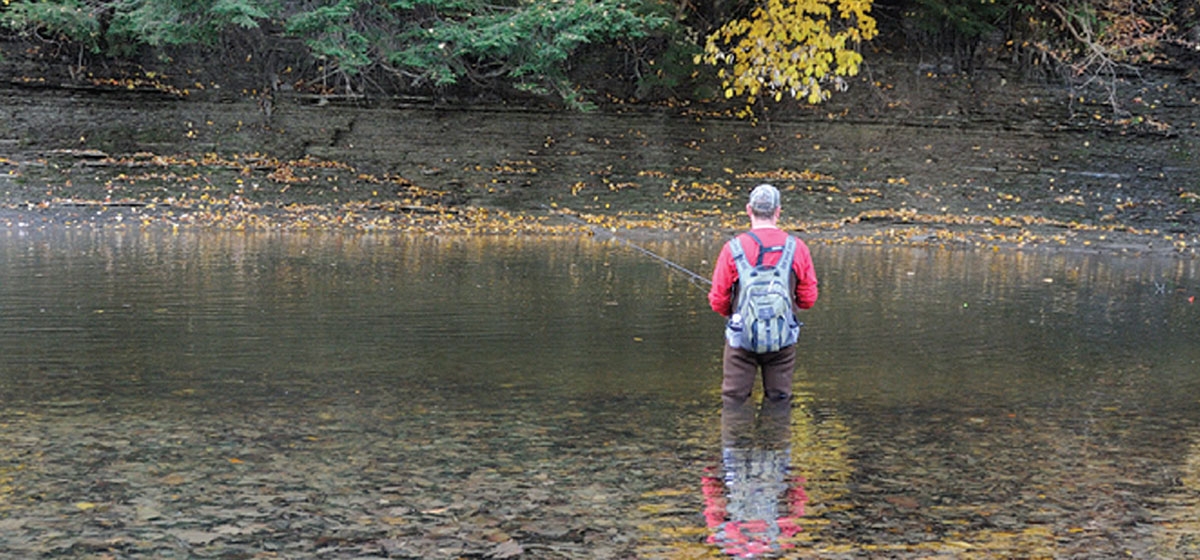Elk Creek in Erie County

Unusual and beautiful places lie just off the beaten path in Erie County—sites that even those who frequently travel to Pennsylvania’s northwesternmost county may not know.
Most visitors to Erie County are familiar with Presque Isle, the curved spit of land that juts into Lake Erie and harbors a wide range of unusual flora and fauna. But the landscape a few miles inland includes unusual, gorge-confined tributaries—streams that are ecologically important and are destinations for steelhead fishing.
Visitors traveling west from Erie on Route 5 can find one such property to the south. After taking a left on the first local road after crossing Elk Creek and parking on the left, visitors will find a trailhead leading to Elk Creek. It’s now owned by the Western Pennsylvania Conservancy and is open for hiking, fishing and other activities. This land was once part of the nursery business that dots Erie County, providing a scenic landscape.
Elk Creek is the state’s second largest tributary to Lake Erie. Prehistoric Lake Erie was larger than it is now, and along with the past influence of continental glaciation, fine lake sediments and glacially deposited sands, gravels and clays formed a thick layer across this landscape. As the glacier retreated north and the lake shrank, tributaries cut through the deposited material until reaching the bedrock below. These Devonian shales and siltstones significantly slowed, but did not stop, the cutting. The resulting distinctive gorges, 75- to 100-feet deep, have upper walls of soft slumping clay sediments that are habitats for rare plant species, and lower bases of shale.
Groundwater stored in the glacial deposits seeps along the valley sides, supplying Elk Creek with the cool, more alkaline water that supports the renowned steelhead in this stream. Elk Creek is a place for excellent steelhead fishing, but also a place to see the effects of Erie County’s geologic history.


